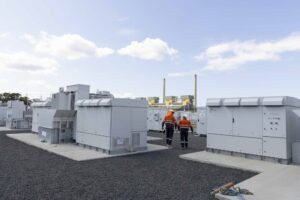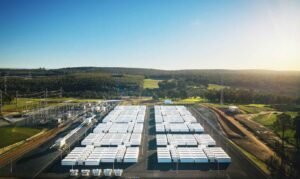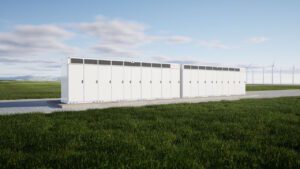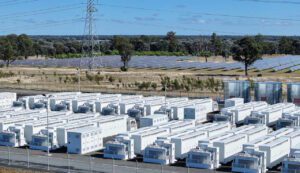Confirmation that Australia has suddenly become the “go-to” place for the international battery storage industry comes with news that Victoria’s battery storage tender attracted some 110 proposals, outstripping even the extraordinary response to the rival tender in South Australia.
Officials confirmed the tender numbers to RenewEconomy this week, with more than two thirds of the proposals being considered “credible”.
That call for expressions of interest was for a 20MW/80MWh battery storage array to be built in western Victoria, at a site with a “weak network” and expanding renewable energy capacity.
Another EOI process is being run for a another 80MW of energy storage, with proposals due on April 25. Once those have been processed, and the final configuration narrowed and defined, a dual-track tender process will take place.
That tender is also open to storage providers such as pumped hydro and solar thermal, but the time lines outlined by Victoria appear to rule these out of contention.
The Victorian tender is happening at the same time as the South Australian tender for 100MW/100MWh of battery storage (with varying configurations also welcome). The initial phase closed last Friday and on Monday the state energy minister revealed that 90 proposals had been received from 10 different countries.
About one dozen of those proposals have been identified, but many more are sailing under the horizon. Tesla, Kokam and LG Chem have all reported multiple proposals that they are involved with, without specifying any details.
Victoria is putting $25 million towards its tender for 100MW of storage, while South Australia is putting up to $15 to $20 million, and may also write contracts to provide “firm” output at critical points.
 State government officials say it highlights how Australia has now become the focus of the international battery storage market, with a major push into grid scale storage, coming at the same time as burgeoning demand for “behind the meter” storage in households and businesses, and a succession of rule changes.
State government officials say it highlights how Australia has now become the focus of the international battery storage market, with a major push into grid scale storage, coming at the same time as burgeoning demand for “behind the meter” storage in households and businesses, and a succession of rule changes.
Key among those is the proposed change to the 30-minute settlement rule in favour of a 5-minute settlement. This might seem just a detail of an opaque energy market, but it has major implications for the future of the industry, because a 5-minute rule would encourage fast-acting technology such as battery storage and demand response.
The incumbent fossil fuel generators have been accused of using the 30-minute settlement to manipulate the markets, withdrawing capacity to force up prices at certain periods before flooding the market with suddenly available capacity to cash in on the windfalls.
And while RenewEconomy put the spotlight on the issue back in June last year, it has now taken centre stage, with The Australia Institute publishing a full-page advertisement in the Australian Financial Review on Wednesday, calling for the rule change to be implemented.
The letter, pictured below, was signed by a range of energy industry luminaries, including former Liberal leader and solar thermal hopeful John Hewson; Embark Australia chair Simon Holmes à Court; Australian Centre for Advanced Photovoltaics head Professor Martin Green; and Steve Garner, from Victorian wind tower manufacturer, Keppel Prince.
The 5-minute rule and other changes are considered critically important to the future of battery storage, which is, in turn, critically important to the wholesale shift to renewables.
Even though some proponents, such as ex Hazelwood coal plant boss Tony Concannon, now head of Reach Solar, say that large-scale solar plus battery storage is as cheap as gas-fired generation, most say that the true benefits of battery storage – and there are potentially up to 20 of them – cannot be fully exploited without a change in rules.
These include changes to markets for frequency and ancillary services, and rules that would facilitate the use of battery storage for network augmentations, or in virtual power plants, where the output of numerous solar households and businesses is aggregated to resemble that of a solar power station.
And, as TAI executive director Ben Oquist noted in a statement issued with the open letter, adjusting this key market lever is just one of several relatively simple actions that governments can take right away, to lower costs, enhance security and reduce emissions.
“The Five Minute Settlement Rule has the backing of the Australian Energy Market Operator and the Australian Energy Regulator, as well as other key industry and energy experts,” he said.
“It’s a straightforward change with wide-ranging benefits, most important of which will be create conditions to attract investment from fast responding energy technologies, such as batteries.”
But just because they can – and, arguably, should – doesn’t mean they will.
Rising above the largely confected “intermittent renewables vs baseload fossil fuels” debate has so far proven difficult for Coalition leader Malcolm Turnbull. Backing a rule that would, in effect, open the door for more large-scale renewables while actively undermining one of the last strongholds of the energy incumbents might be a bridge too far.
As we noted in June last year, the rule change will almost certainly be opposed by owners of large generators, particularly those with existing generating assets that cannot respond as quickly to demand and supply changes and wholesale market price signals.
The position of “gentailers” – those companies with large generation assets but also promising a switch to distributed generation – will be interesting to watch.









